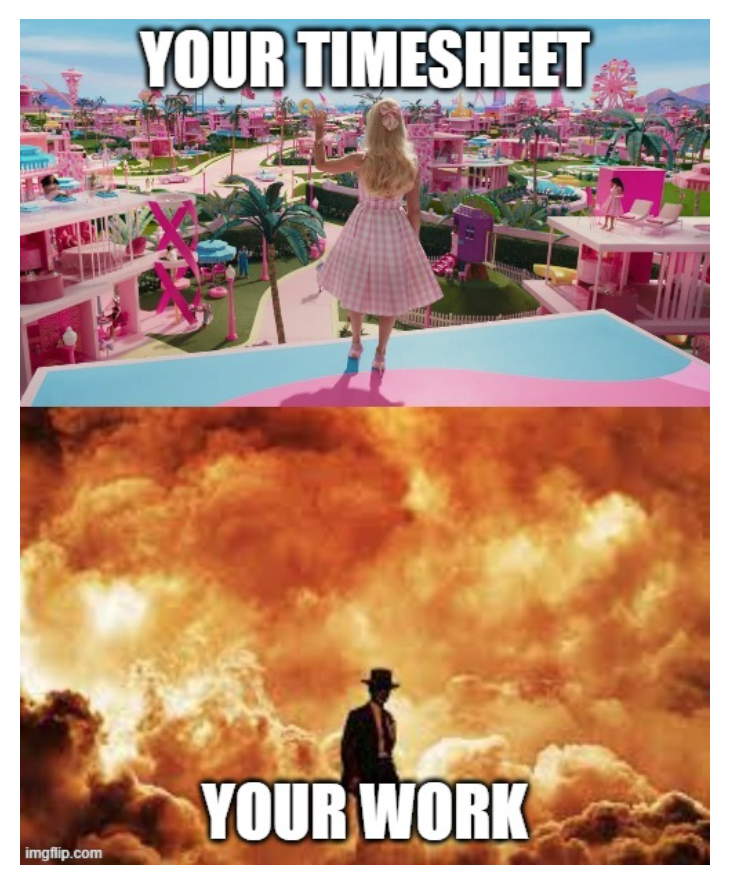Unmeasured: Part 1 – We are measuring the wrong things

There’s a spreadsheet* somewhere that says you had a good week.
- You closed 19 Jira tickets
- You replied to 143 emails
- You joined 17 meetings and dropped 6 comments in a shared doc
- You cleared your inbox twice
- You sent a Teams message at 11:06 p.m., just so everyone knows you’re still “on it”
Congratulations. You’re crushing it. Right?
Right?
[* In fact, there is not one spreadsheet. There are several exported spreadsheets from all kind of apps that don’t talk to each other.]
Still worshipping the assembly Line
Most organizations today are swimming in metrics, but they’re still measuring knowledge work like we’re on the factory floor. It’s Henry Ford’s mindset in a Copilot world: track every movement, clock every hour, and reward visible output.
We call this “data-driven”. But let’s be honest: it’s mostly bullshit-driven.
We’ve built elegant dashboards on top of shallow metrics. We praise activity over impact, and we confuse quantifiable noise for real value. We pretend more data equals better decisions, but we’re just dressing up dysfunction in charts and calling it strategy.
The tyranny of vanity metrics
We celebrate the wrong things because they’re easy to track:
- Lines of code written (even if they’re rolled back tomorrow)
- Emails sent (even if they’re unread)
- Meetings attended (even if they could’ve been a Loom)
- Teams activity (even if it’s performative panic)
- Time spent in the office (even if you’re just wandering between meetings)
These are vanity metrics. They give us the illusion of productivity. They make dashboards light up in happy greens and blues. But they don’t tell us if the work had impact. If it solved a real problem. If it made anything better.
And now? AI can write your emails. Draft your code. Summarize your meetings. You can game the system with ChatGPT and still look “productive” on paper. So what does your activity even prove anymore?
How do you measure thinking? You can’t.
You can’t measure the moment you step out of the shower and think, Wait, why are we doing it this way? You can’t measure the five-minute walk where your brain does the background processing and finally connects the dots. You can’t quantify the watercooler conversation that sparked a new direction for the team—because it wasn’t a scheduled “collaboration block” in the calendar. Thinking doesn’t show up in productivity metrics. Rest doesn’t either. Neither does curiosity, intuition, or the skill of asking the one question that unlocks a week’s worth of work.

The nonsense of the 40-hour week
And while we’re at it: who decided that a full-time job must be 40 hours? (I know, Henry Ford, but why do we still still stick to that?)
The 40-hour workweek wasn’t designed for creative problem-solving, deep thinking, or high-trust collaboration. It was designed for factory floors: to split the day into shifts and keep production lines moving. That model had one goal: obedience. Show up. Stay put. Follow the rhythm of the machine.
And we’re still running on it.
Say you’re a working dad*. You put in 30 focused hours a week, because you leave on time to pick up your kids, because you’re organized, and you don’t waste time. You deliver the same outcomes. Maybe better.
But you earn less. Get fewer opportunities. You’re treated as “less than full-time”.
Why? Because you didn’t reach the magic number. You didn’t conform to the schedule. You broke the rhythm of the system built around visibility, not value. This mindset punishes efficiency and rewards endurance. It favors people who perform time over people who perform impact.
Same goes for contractors - Customers want to know their daily rate and then compare these to the competitors and make the very big (and uneducated) assumption, that a lower daily rate will result in a less costly project. Well. Sorry to break it to you, but that’s not how things work.
The 40-hour week isn’t about productivity. It’s about control. And it’s time we stopped confusing obedience with contribution.
[* See what I did there 😇]
Success isn’t linear. So why do we measure it like it is?
The myth of linear productivity (that every hour produces an equal slice of value) is one of the most damaging ideas in modern work. Especially in knowledge work, where the value often comes in spikes: one conversation, one insight, one wild idea scribbled on a napkin.
Some of the most high-leverage work I’ve ever seen looked like “nothing”. Some examples?
- A dev spending a day not coding to decide what shouldn’t be built.
- A PM spending two hours rewriting the problem statement.
- A senior designer deleting five ideas so the sixth one could breathe.
None of this shows up on a timesheet. But it’s the stuff that changes everything. But also… don’t get me started on timesheets 🙄. Well maybe a little rant:
Timesheets are a farce
Most timesheets are fiction. (will die on that hill)
They don’t capture what matters, because what matters (thinking, mentoring, unblocking, problem-solving) doesn’t fit neatly into time slots. So employees spend time they could use for something meaningful trying to retroactively guess how they spent their week. It’s not reflection; it’s a wild guessing exercise wrapped in administrative guilt.
And on the other side? Their manager:
- Can’t verify whether any of it is accurate
- Doesn’t have time to check even if they could
- Just hits “Approve” to get on with their actual job
The result is a semi-automated, zero-value ritual that creates the illusion of control while delivering none. It adds overhead without insight. It’s bureaucracy disguised as accountability.
(And still every organization has some sort of timesheet approval process - or they ask me to build that for them. Thanks, but no, thanks.)
The Return-to-Office illusion
And then there’s the control problem that sits at the root of all that mess.
We don’t trust people to be productive unless we can see them. So we roll out return-to-office mandates. Mandatory in-person Tuesdays. Badge scans. Not because the work requires it, but because the building is lonely.
It’s not about outcomes. It’s about optics.
If someone delivers thoughtful, creative work from a quiet cabin, we call it slacking. If they’re triple-booked in glass-walled rooms five days a week, we call it committed. As if breathing stale air under fluorescent lights equals impact.
Especially to my US-american friends where this seems to be even more an issue than in europe: RTO isn’t strategy. It’s building management disguised as culture.

What are we actually optimizing for?
We build dashboards like they’re truth machines. But what if they’re just measuring noise? What if the things that really matter; insight, clarity, connection; are precisely the things that get crushed under the pressure to look busy?
What if we’ve built entire systems that punish the best parts of human work?
- Creativity is messy
- Progress is uneven
- Meaningful work is often quiet
- And the best ideas don’t come when we’re cranking out tickets; they come when we step away long enough to think
Toward something better
This isn’t just a rant. It’s a reckoning. We can’t fix the productivity problem by tweaking the metrics. We have to change the lens entirely. The question is no longer, How do we do more? It’s, How do we do what matters?
The next post explores the “Run vs. Change the Business” divide, and why we’re only measuring the part that’s easiest to track, not the part that drives transformation.
But until then, ask yourself:
Are you being productive, or just looking like it?
And who, exactly, benefits from the difference?
More parts of this series
Some resources
Published on:
Learn more